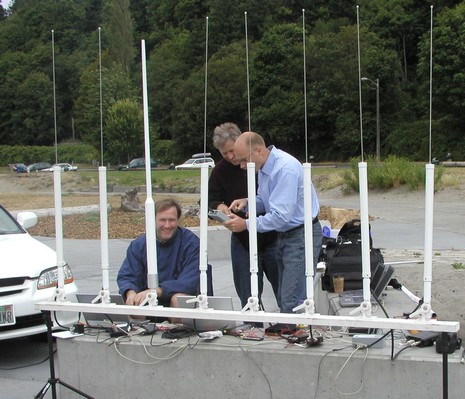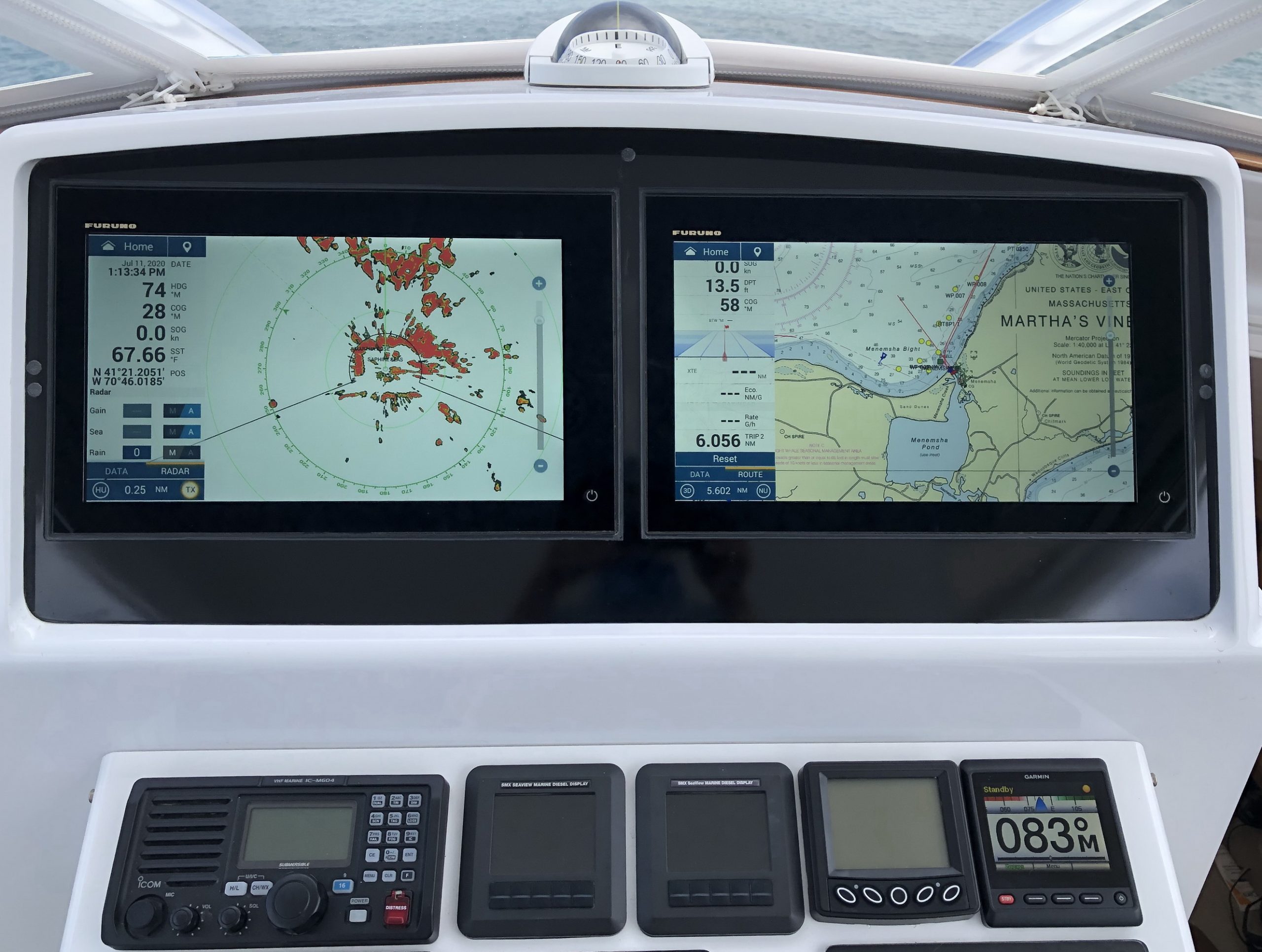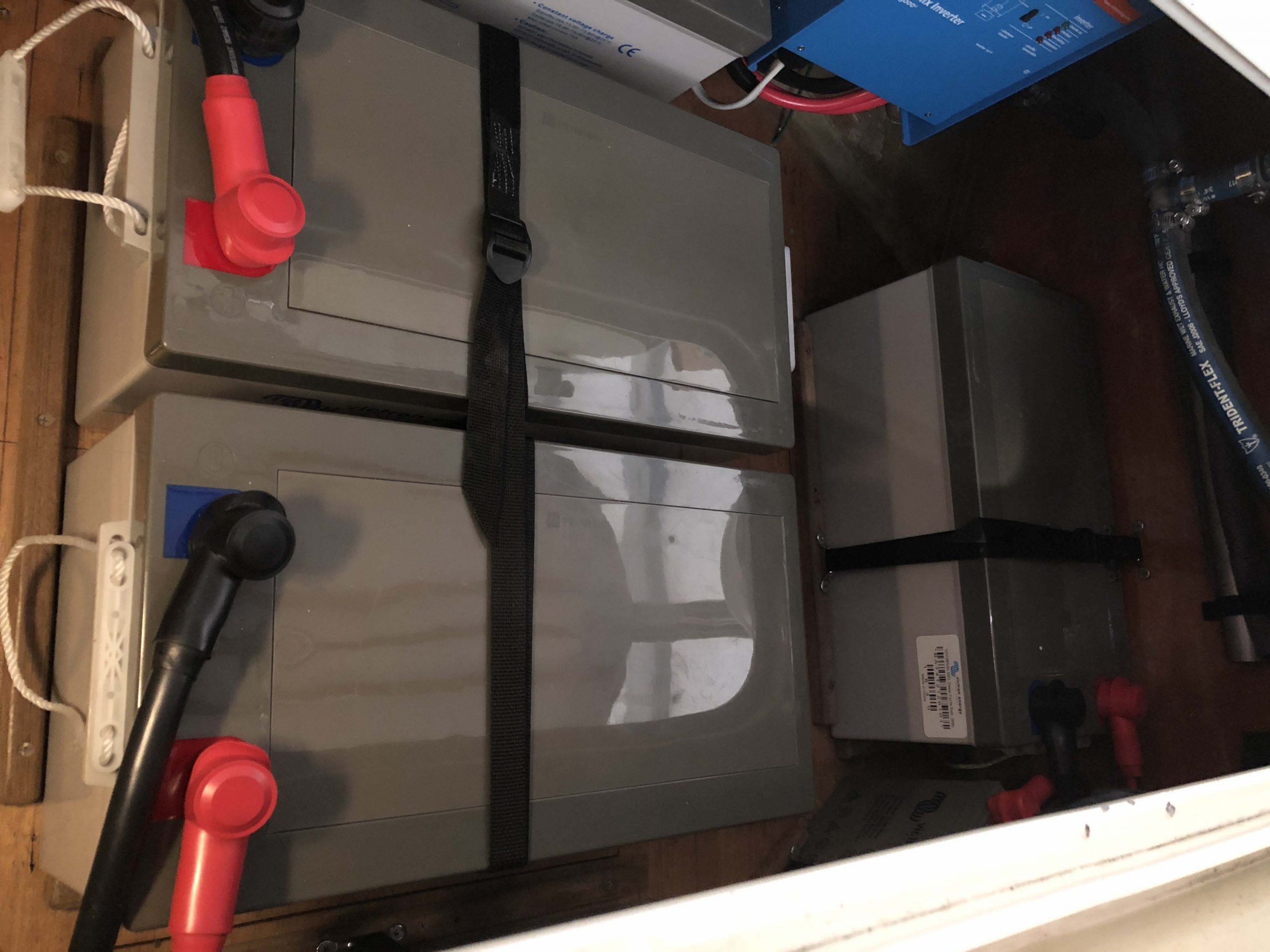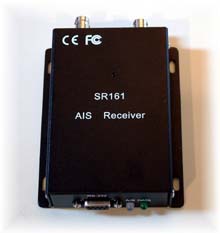The AIS receiver test, testing is hard!

This photo shows the AIS receiver test I mentioned a while back. There’s organizer Jeff Hummel of Rose Point Navigation, Doug Miller of Milltech Marine and Cory Sytsma of SeaCAS, plus eight different receivers all set up on the shore of Puget Sound. It would be great to see how they performed head-to-head, but the picture also reveals what turned out to be a significant flaw in the testing. The close proximity of receivers and antennas apparently created an interference cloud so strong that performance dropped 50–75%! For instance, the first unit that was turned on, a single channel SR161, showed a range of 17-20 miles until the others went on and its range dropped to around 7 miles. The crew did go on and collect some results (which didn’t look good for single channel models), but almost none of the manufacturers involved think they should be published. Hopefully the test will be restaged with much greater separation between the units. In the meantime, hats off to Jeff and the gang for the effort. Their work does suggest that we need to learn more about receiver interference and proper installation, and they also did a separate antenna test that we’ll publish soon.













On the AIS interference:
Receivers contain oscillator circuits that will transmit a signal a short distance. All receivers are actually low power transmitters in a way. Oscillator circuits transmit frequencies at their primary frequency and at multiples of their primary frequency. The signal these oscillators emit can actually “jam” the adjacent receivers in your test. The “jamming” can occur through the airways, which is usually called radiation, (antennas etc.) or through the wiring, which is called conduction, (NMEA wires, Power wires etc.). Other sources of jamming can occur from the emissions of internal busses, other high frequency circuits and even the microprocessors of each unit. A spectrum analyzer with a sniffer (antenna) can be used to locate the culprit(s). Turn each radio on and off and look for the noise rise on an adjacent radio.
And all those antennas side-by-side does’t make for a fair comparison either… How ’bout a single antenna feeding a multicoupler which distributes the received signal to the test radios. There may be some signal attenuation, or gain, depending on the multicoupler used, but all the radios will be getting the same signal strength, making for a better comparison test (based on reception).
…me again
I have two of the 2-channel SR162 receivers that Milltech imports. One has the built-in GPS. Both work great, connected to 12-volts and a simple 1/4 wave antenna. Just wanted to mention, that besides your range testing, I’d be interested to know things like interference rejection, ability to operate in a RF noisy environment, what messages they are able to decode (there’s a bunch of different ones), properly decoding those messages, and ability to interface to different equipment. They’ve been plug-n-play for all the AIS charting software I’ve played with, but I have had issues interfacing to E-series displays.
Maybe line up a bunch of multifunction displays while you’ve got a table-full of AIS receivers, and see how they play with each other… Sure to make for some interesting observations.
Oh, and make sure that in addition to the Class A ship stations, you’ve got some AIS base stations, and Class B ship stations within reception range. Maybe you can borrow a couple class A receivers to put into your comparison test.
There’s gonna be a lot more to this integrated AIS stuff than a simple max-range shoot-out.
Mark
Like Mark, I have had a good experience with a Milltech product. In my case, the less expensive (cheap??) SR161 single channel unit.
My initial testing of the unit used my masthead VHF antenna (about 55 feet above the water) temporarily disconnected from my VHF R/T. I’m also using Milltech’s “combiner” cable that allows the GPS sentences to be passed through the AIS receiver so that I only need one RS-232 port on my laptop. The latter is provided using a single port Quatech PCMCIA card. The charting / navigation software is NavSim’s BoatCruiser 2.0 combined with C-Map charts. The GPS info is from an older Raymarine RayChart 320 chart plotter unit. The latter also feeds my DSC enabled VHF R/T, an ICOM M-601.
I was pleasantly surprised at how easy it was to connect everything, really very much a plug-n-play scenario.
The only negative I have found to date is that the AIS updates seem to be a little slow coming in. I assume that’s related to the fact I have the single channel receiver.
On the plus side, I’m amazed by the range at which I can pick out targets. I have no trouble at all picking up commercial shipping on Lake Ontario from my mooring in Port Hope harbour at a range in excess of fifty miles.
For the permanent installation, I will mount a four foot VHF antenna on the boat’s stern rail. I expect that will reduce the AIS range somewhat, but it should still be adequate.
On the AIS Propagation Distance:
Read your comments on the AIS test. I was surprised to see how degraded the signals became because of the close proximity of the antennas. As a reference point, I have a Nobeltec AIS unit with the Shakespeare (A-100) antenna mounted on the top of my mast (80 feet up). While in Herzliya, Israel this summer getting ready to transit the Suez Canal, I picked up numerous AIS signals from way our in the Med. The maximum distance I received was over 360NM. I have the screen shot saved because I found it surprising myself. With good propagation and no local interference, I was able to get these types of results consistently. Dan
just bought a Comar AIS-2-PC system and am wondering the height of the antenna to give good reception, because my office is about 20 miles from the sea front?
i just installed a Milltech SR161 with aerial combiner. They interface to a Standard Horizon CP180 Plotter. System worked well from first connection. Speed is adequate for my sailboat. Range with VHF aerial up 40 feet has been at least 50 miles out in the Pacific. I was amazed. I should also say that initially plus and minus power wires were reversed. Because of inadequate fusing on my part smoke was actually seen coming out of BOTH units in my “lab environment”, before the 15 amp circuit breaker that was in circuit blew. After all of that, the products worked fine when properly connected. I was shocked by this component strength….good for Milltech!
You are all under arrest. Put down your antennas and come out with your hands in the air. If I see a single microphone or mouse you are all dead meat! I’m charging you with violation of Physics code 12C sub para 6B (art 2a) “Line of sight VHF signal reception; excessive attribution to rare meteorological phenomena.”
Help me guys, what’s really going on here? 360 miles from a 25 watt signal less than 200 feet above the water? There have GOT to be some repeaters in this mix, right?
No, it’s not normal with 100+ nm repeatable distance on AIS. Only temporary propgation conditions give such results, but they only last a few days if that even.
With an antenna 15-20 meters up, you will see normal distances of about 20-40 nm to a Class A transponder, and around 10-15 nm to a ClassB transponder. The difference comes from both the difference in output power but also the normally higher and better antennas used on larger ships.
It’s worth noting that Orbcomm launched six satellites equipped to hear at least Class A AIS transmissions, and according to the USCG they’re working well as of a couple weeks ago.
http://tinyurl.com/6ytrca
As a ham who has some experience on 2 meters (144mz) I can say, without reservation, that signals in this band can travel hundreds or even thousands of miles with proper aerials, height and power in perfect climatic conditions. But, it is also well known in the ham community that regular VHF signals can propagate well over line of site using “ductile” transmission between atmospheric layers where the signal “skips” between land/sea and sky layer. Because of this I am not all surprised that we can pickup AIS signals at certain times 100’s of miles away….especially over water and especially considering that the AIS transmitting aerial might be 100+ feet in the air on a tanker.